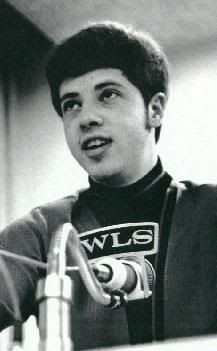When music genius Duke Ellington traveled to the Upper Peninsula in 1959, he conceived a jazz masterpiece.
U. P. residents point with pride to "Anatomy of a Murder," the bestselling novel by Ishpeming native and Michigan Supreme Court Justice John Voelker (pen name Robert Traver), which producer/director Otto Preminger turned into an award-winning motion picture. While the movie, filmed entirely in and around Marquette, impressed theater audiences, the soundtrack was equally striking.
Preminger had commissioned Ellington, probably the 20th century's greatest jazz musician, to compose an original score. Ellington had written short pieces for the movies, but this was his first (and only) full-length soundtrack.
While in Marquette, Ellington stayed at the Northland Hotel, now known as the Landmark Inn, as did Jimmy Stewart, the star of the picture.
Besides composing and recording the soundtrack, Ellington had a small cameo appearance as the owner of a road house. In the scene, which took place at the Mount Shasta Lodge in Michigamme, Ellington's character, Pie Eye, plays piano with defense lawyer (and jazz aficionado) Paul Biegler, as portrayed by Stewart.
In addition to Stewart, the outstanding cast included newcomer Lee Remick, Ben Gazzara, Eve Arden, Arthur O'Connell, George C. Scott and Orson Bean. Preminger brought a crew of 150 to Marquette for eight weeks of filming. Adding excitement to the project, Preminger hired 300 locals as extras. Some had speaking roles.
Ellington composed the score in Marquette while the black & white legal drama was being filmed, much of it at the Marquette County courthouse.
His soundtrack includes titles such as "Midnight Indigo," "Flirtibird," "Happy Anatomy," and "Windswept Sunday," among others. The opening title effectively launches the film which runs two hours and 40 minutes. "Flirtibird" is Remick's theme song, while Stewart's is called "Polly," after his character's first name.
After recording the soundtrack at Columbia Studios with his orchestra, Ellington embarked on the U. S. summer jazz festival circuit and traveled to Europe later in the year.
World premiere for the movie was held at United Artists Theater in Detroit on July 1, 1959, with many of the major stars attending. The picture was nominated for six Academy Awards.
Among the first major movies to feature a jazz soundtrack, "Anatomy of a Murder" was also acknowledged by the recording industry. Ellington was honored with three Grammys on Nov. 29, 1959, during the the organization's second annual awards ceremony. He won as a composer for best soundtrack album as well as for best musical composition. The third Grammy lauded Ellington as an artist for best performance by a dance band.
The story of Ellington, who has over 2,000 compositions to his credit, is virtually the history of jazz in America. Born in 1899, Edward Kennedy "Duke" Ellington was a giant on the jazz scene from the early 1920's until his death in 1974.
Ellington had arrived in Marquette County on April 29, 1959, his 60th birthday. He met Preminger at the Roosevelt Hotel in Ishpeming for breakfast. That evening Preminger hosted a birthday bash for Ellington at the hotel.
A sophisticated world traveler, Ellington came to rural northern Michigan in a different era. The modern Mackinac Bridge was newly opened, but 1959 was years before national civil rights legislation was passed. Regardless, Ellington said in a radio interview to promote the movie that he enjoyed his stay in the U. P.
While "Anatomy of a Murder" is recognized as a great movie closely reflecting its U. P. origins, many people don't realize the score was integral to the film's success. Actually, Ellington's soundtrack can stand alone as a virtuoso performance by America's greatest jazz composer and bandleader.

